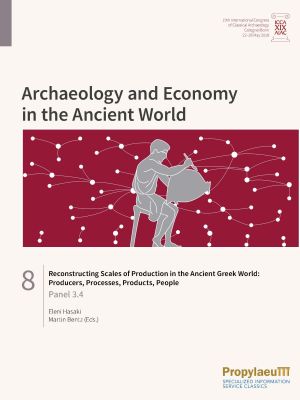Acton, Peter
Reconstructing Scales of Production in the Ancient Greek World: Producers, Processes, Products, People: Panel 3.4
Scholars have adopted an array of approaches, both traditional and experimental, to approximate the scale of craft production, which has always been central to the study of ancient economies. This panel examines these new methods, for estimating the workshop crew size, the workshop physical space, the time requirements for the chaîne opératoire for each product, the needs of the population for different goods, or the percentage of ancient products surviving to this day. These new approaches, some borrowed from related disciplines, should help us overcome the paucity of archaeological evidence. By employing social network analysis, individual worker’s output, architectural energetics, and production-consumption ratios, we aim to improve our understanding of the scale of craft production in the ancient Greek world, both in the Greek mainland and in the Greek colonies in Sicily. Archaeologists and ancient economists are using new approaches to study the ancient economy at a micro-level, taking into consideration several variables, such as raw material procurement, labor investment, cross-craft dependencies, apprenticeship periods, and product demand, to name a few. From Prehistoric to Classical Greece and Italy, the industries covered are mostly ceramics-centered, such as pottery and tiles, but also pavement construction and funerary monumental architecture.







